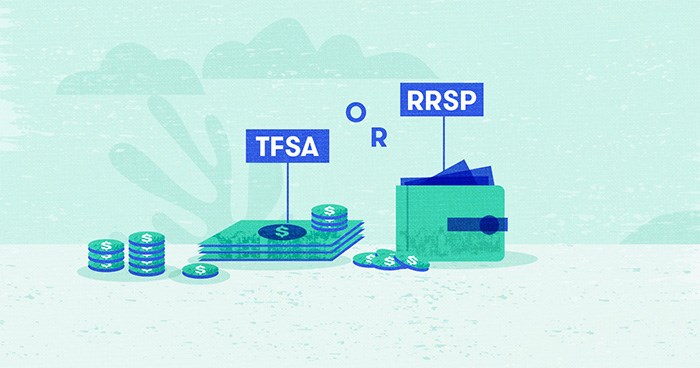 Photo: WealthBar
Photo: WealthBar
We’ve all been there. You go to a party and your finance savvy friend starts talking about investing in a TFSA and RRSP. Your eyes glaze over. Your inner voice is saying "You should know this. 2018 is the year you get your $%*& together.”
It's easier than you might think. To start off, there are two primary ways to save, including using the Tax Free Savings Account (TFSA) and the Registered Retirement Savings Plan (RRSP).
Which one is right for you? Let’s put the confusing jargon aside and answer a few questions, first.

How much do you have to invest? (You can start small)
It really does not take millions for you to begin investing. A thousand or two is what it takes to get started. But what are you saving for?
TFSA for flexible saving
If you have no goals to speak of or really don't know what you want, the TFSA is your best friend. You can put $5,500 into a TFSA each year – and you might have additional contribution room from previous years (up to $57,500, in fact).
It's for saving for an emergency fund, or for big one-time purchases. Tuition, a new computer, a vacation, maybe a renovation fund – pretty much anything! It grows tax free.
When it comes to flexibility, with a TFSA, that is totally the name of the game. You can make deposits or withdraw any time and your contribution room just keeps growing. So you've got some options!
 Photo: WealthBar
Photo: WealthBar
RRSP for life’s big milestones and retirement
The RRSP is the way to go for retirement savings. You can put up to 18 percent or $26,010 (whichever is lower) of your income into an RRSP this year. If your income is above $60,000 or so, the RRSP can generate a tax refund you can use for other goals (or even a TFSA contribution).
You can also use an RRSP to allocate funds towards the Home Buyers Plan or Lifelong Learning Plan. So, while an RRSP is mainly for building up your nest egg for when you stop working, it can also help with your important life milestones.
But before you choose an RRSP or TFSA, you need to answer some more basic questions about investing.
How much risk are you willing to take?
You want to get a good return on your money, without risking it all.
Now, even if you’re not the kind of person who religiously reads the financial section of the newspaper, you’re probably aware that stock markets are surging. So why not invest in stocks, instead?
Because… what goes up, must come down. Stocks are notoriously hard to pick. Even if you ‘knew’ 20 years ago that the Internet was going to be The Next Big Thing, you still might have placed your bets on Netscape or Pets.com — and lost your investment.
Investors who try to reduce their risk to a minimum might put all of their money into government bonds. But then, they miss out on the big gains when the market is roaring ahead.
 Photo: WealthBar
Photo: WealthBar
So how do you manage risk long-term?
However you want to invest, it’s smart to take a diversified approach.
A diversified approach to investing helps you maximize your return while lowering your risk. Both the TFSA and RRSP allow you to do that.
You can choose from ETF portfolios and many stocks to currencies and other kinds of investments. So, a TFSA or RRSP is not not a one-size-fits-all box to just stow your ‘extra’ money.
How you invest depends on what you want to achieve. Put some money into a TFSA along the way, enjoy tax-free withdrawals as you buy what you need. Or sock money into an RRSP, possibly lower your taxable income and know that you've got enough cash at the end to live the way you want. It's not uncommon for folks to have both.
Want to know more? Open a WealthBar account and get access to unlimited financial planning advice, right from your computer or phone.
Want to stay in the know about helpful financial tips? Sign up for WealthBar’s newsletter. You can also connect with WealthBar via Facebook,Twitter, and LinkedIn.


